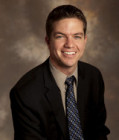An Assessment of United Nations Efforts to Include Women and Counter Sexual Abuse in Peacekeeping
Connect with the author
In 2000, the United Nations Security Council passed the historic Resolution 1325, since backed up by additional resolutions calling for the full participation of women in all peacekeeping missions and for enhanced efforts to protect women from physical violence during and after wars, civil wars, and other violent conflicts. After fifteen years of United Nations initiatives in pursuit of these goals, where do things stand – and what lessons can be learned to inform future international programs?
More Women in Peacekeeping Missions
Female participation of women in peacekeeping missions has increased. According to United Nations data, in 1993 women made up one percent of uniformed personnel in peacekeeping missions, but their share rose to three percent of military personnel and 10% of police personnel by 2012. Similarly, our data also show that the proportion of female military troops has doubled since December 2006 and the proportion of female police has doubled since 2009.
Nevertheless, our research shows that female peacekeepers tend to be deployed to the safest missions and not to places where the security situation is most fragile. Following a kind of gendered “protection norm,” countries willing to deploy female troops and police send them to more economically developed places and on missions with fewer peacekeeper deaths. Three additional factors also influence the proportions of women sent to peacekeeping missions:
- Contributing countries with higher proportions of women in their domestic militaries tend to send more women on peacekeeping missions.
- Countries themselves experiencing high levels of violence tend to deploy more women to peacekeeping missions abroad – another tendency that fits the pattern of protecting women.
- Countries with more women in their labor forces tend to contribute higher proportions of military and police women to peacekeeping missions. But such countries with better records of gender equity are also very sensitive to the risks women peacekeepers could face.
Sexual Exploitation and Abuse in Peacekeeping Missions
Since 2006, the United Nations has actively worked to stamp out sexual exploitation and abuse – but nevertheless these problems remain endemic in its peacekeeping missions. In 2013, a total of 595 allegations of sexual abuse were reportedly perpetrated by United Nations peacekeeping personnel, and there were almost certainly more instances, due to reluctance to report cases.
Although there are some indications that greater female participation in peacekeeping missions is associated with fewer allegations of sexual violations, the relationship is not consistently robust in our empirical models. Relying on increased female deployments to solve the problem will not suffice, because female peacekeepers cannot change entrenched practices and may not be able or willing to hold their male colleagues accountable. Our data show that a better strategy is to include more male and female personnel from countries with better records of gender equality.
When peacekeeping missions have more troops and police from countries with higher female labor force participation and higher ratios of girls enrolled in their primary schools, the missions tend to have fewer reports of sexual exploitation and abuse.
Lessons for the Future
As the United Nations and its member countries continue efforts to reduce sexual abuse and expand women’s role in peacekeeping, several improvements can be made:
- After their own deployments on United Nations peacekeeping missions end, female peacekeepers should serve as recruitment officers for others in their home countries.
- To help female soldiers and police officers train in their home countries for possible deployment on peacekeeping missions, the United Nations can help set up programs and provide scholarships for women in security services to participate.
- Prior to deployments on peacekeeping missions, the United Nations should provide formal mentoring programs or workshops to help women form expectations and anticipate challenges they may face during the mission.
- Contributing countries can amend requirements for joining missions to encourage historically underrepresented groups to take part in peacekeeping operations.
- Recruitment criteria for missions and mission leadership positions should include screening based on beliefs about gender equality as well as for technical skills.
- Once peacekeepers are deployed, criteria for promotions or extended tours and for medals given to outstanding participants should include performance to further goals of gender equality, and behavior detrimental to gender equality should lead to demotions, removal of medals, or removals from the mission.
- To make reporting of instances of sexual abuse or exploitation easier for local people in countries where peacekeepers are deployed, the mission should conduct active outreach to local communities and form partnerships with nongovernmental organizations operating in the area.
In sum, although considerable progress has been made in a short time in pursuit of the landmark goals set forth in Security Council Resolution 1325, much more remains to be done. Increasing the participation of female police and soldiers in United Nations peacekeeping missions requires new efforts by contributing countries and international authorities. And as their presence ramps up, women peacekeepers themselves cannot bear the entire burden of countering the scourge of sexual exploitation and abuse in mission organizations or in the countries where missions are deployed. All mission participants must take responsibility – and the leaders and procedures of United Nations peacekeeping efforts must reward all participants who further goals of gender equality and sanction those who subvert the goals.

